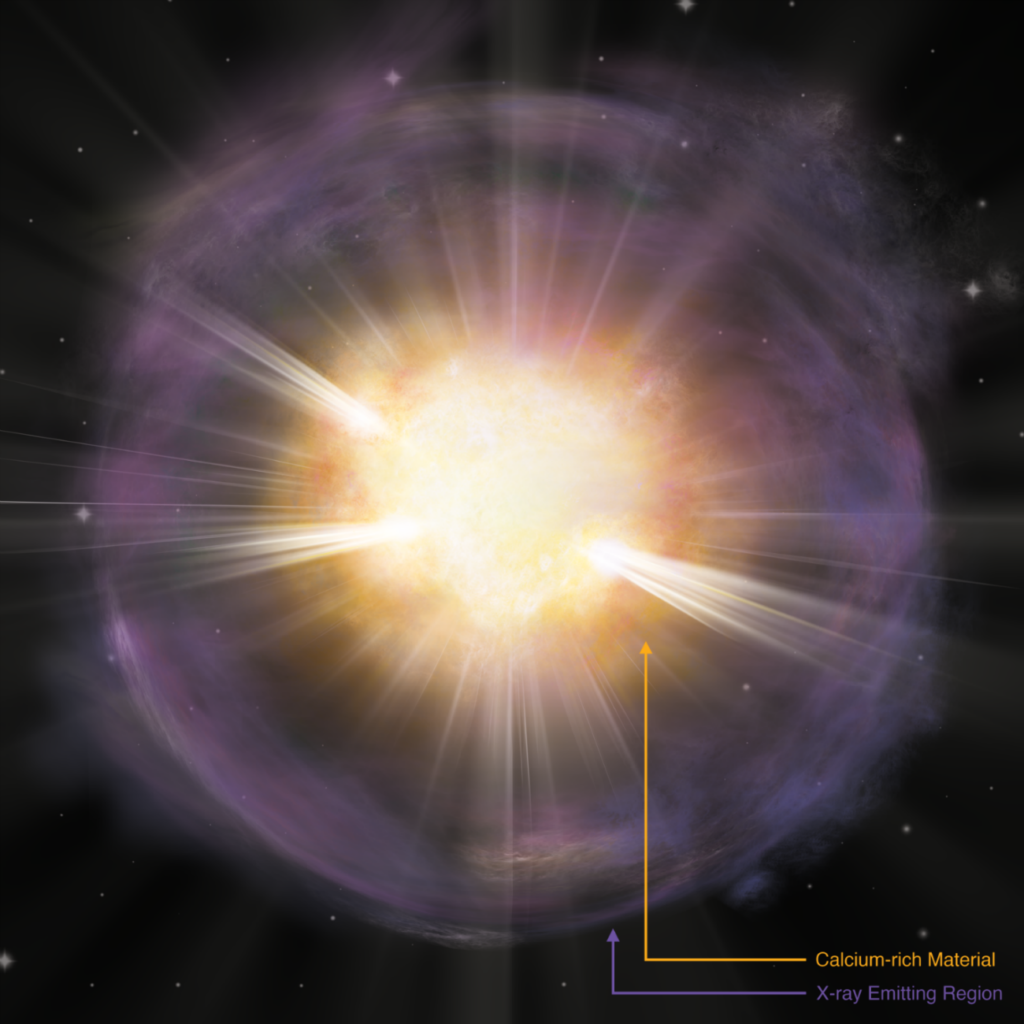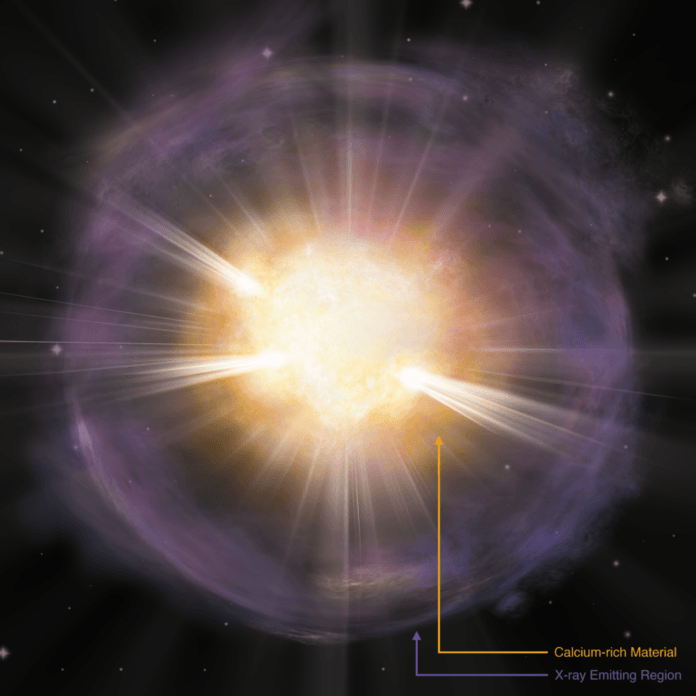
Credit: Aaron M. Geller, Northwestern University
Does the calcium in our teeth and bones really come from exploding Supernova stars? Scientists wondered the same until they found an exploding Calcium-rich Supernova star in 2017. And in a recent study, scientists from the Northwestern University, were able to examine a Calcium-rich Supernova (SN 2019ehk) with X-ray imaging. This was the first time in the world that scientists could glimpse the end of an exploding Calcium-rich star.
Raffaella Margutti, a senior author in the study, “Before this event, we had indirect information about what calcium-rich supernovae might or might not be,”
It is said that while all Calcium in the universe comes from stars, up to half of it including Calcium in our teeth and bones are coming from exploding supernovae. It is a rare kind of stellar explosion. They have the ability to create Calcium in seconds while other stars take their whole lifetime to slowly burn helium and create a little Calcium.
When a Calcium-rich star comes to its end time, first the star sheds its ‘outer layer of gas’. Then finally when the star explodes, its matter collides with the particles from its outer shell. This results in intense X-rays. The whole explosion produces a massive pressure and an extreme temperature giving power to a nuclear fusion where the Calcium is created and emitted. It is said to be a way of releasing their massive energy.
The story of the discovery of this Supernova – SN 2019ehk
IT was first observed by an amateur astronomer, Joel shepherd on April 28, 2019. It is located in a spiral galaxy called, Messier 100 which is 55 million light-years away from us. It was the orange dot that appeared on it the next day made him acknowledge the Astronomical community.
And after his acknowledgement, astronomers and academics from around the world collaborated on studying this strange observation. And SN 2019ehk was observed through the world’s best network of robotic telescopes. It is said that they were able to observe the Supernova in the X-ray and Ultraviolet ‘just 10 hrs after its explosion’. And its massive X-ray emission was observed for only 5 days before its completely vanished.
“In the world of transients, we have to discover things very, very fast before they fade, It was much more luminous than anybody would have ever thought. There were no preexisting theories that predicted calcium-rich transients would be so luminous in X-ray wavelengths,” said Raffaella Margutti.
Before the explosion, the star is believed to be a ‘White dwarf or very low-mass massive star’. If it were not for the explosion, no one would be able to observe that the star was there, not even the Hubble could spot it earlier.
Nearly 70 co-authors from 15 countries collaborated on this major study which has been published in The Astrophysical Journal.

